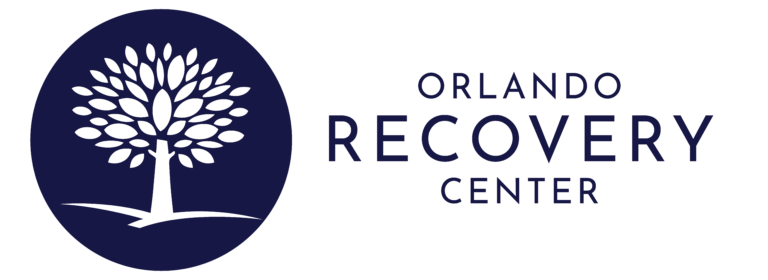Key Takeaways
- Injected drugs bypass the digestive system, allowing rapid effects and increasing addiction risk.
- Commonly injected substances include opioids, stimulants, and misused prescription medications.
- Injection drug use is linked to health risks like HIV, hepatitis, collapsed veins, and overdose.
- Tools for drug injection, if shared or non-sterile, can lead to infections and disease transmission.
- Supervised injection sites can reduce overdose risks and connect individuals to treatment.
- Long-term injection use can cause chronic health issues, organ damage, and psychological disorders.
- The stigma surrounding injecting drugs leads to social isolation and hinders access to healthcare.
- Prevention and treatment strategies include education, needle exchange programs, and medication-assisted treatment.
- Long-acting injectable medications show promise for HIV prevention among at-risk populations.
An Overview of Injected Drugs and Commonly Injected Substances
Injected drugs refer to substances that are introduced into the body via a needle and syringe, bypassing the digestive system for direct entry into the bloodstream. This method of drug delivery is known for its rapid effects, as it allows the drug to reach the brain quickly. Common types of medicines that are often injected include opioids like heroin and synthetic variants such as fentanyl, stimulants like cocaine and methamphetamine, and prescription medications when misused intravenously.
Injection drug use is associated with a higher risk of addiction due to the immediacy and intensity of the drug’s effects. It also poses significant health risks, including the potential for transmission of infectious diseases like HIV and hepatitis through shared needles. Additionally, injecting drugs can lead to immediate physical dangers such as collapsed veins, bacterial infections, and overdose. Long-term consequences may include chronic health conditions, organ damage, and psychological disorders.
Understanding the scope of injected drug use is critical for public health measures. According to the UN Office on Drugs and Crime (UNODC), millions of people worldwide engage in injection drug use, with numbers on the rise. The increase in synthetic substances like fentanyl has exacerbated the risks associated with drug injection due to their high potency and potential for overdose.
Understanding the Intricacies of Drug Injection
The primary method involves drawing a liquid drug into a syringe, followed by the insertion of the needle into an injection site on the body. Common injection sites include the veins (intravenous), muscles (intramuscular), or under the skin (subcutaneous). Each method has its own risks and implications for the rapidity and intensity of the drug’s effect.
Treatment Can Be Life Changing
Whether you are struggling with addiction, mental health or both, our expert team is here to guide you every step of the way. Don’t wait— reach out today to take the first step toward taking control of your life.
Tools commonly used in drug injection include syringes, needles, tourniquets, alcohol swabs, and sometimes, ‘cookers’ or spoons for dissolving drugs in water. The use of non-sterile equipment or sharing of tools can lead to immediate physical risks such as infections, including HIV and hepatitis, as well as injuries at the injection site. Medication safety practices in healthcare are critical to prevent errors in drug administration, as highlighted by the Institute for Safe Medication Practices (ISMP).
Supervised injection sites offer a controlled environment where individuals can inject drugs under medical supervision, reducing the risks of overdose and promoting safer injection practices. These sites also provide access to health services and can serve as a bridge to treatment and recovery. The establishment of such sites is part of a harm reduction strategy that acknowledges the challenges of addiction and aims to minimize its adverse effects.
Understanding the Tools and Risks of Drug Injection
The primary tool used in injection is a syringe, which allows individuals to introduce substances directly into their bloodstream. However, syringes are not the only equipment involved; other paraphernalia includes needles, tourniquets, cotton filters, cookers (small containers used for dissolving drugs in water), and rinse water. Each of these items plays a role in preparing the drug for injection.
One significant risk associated with these tools is the transmission of infectious diseases, such as HIV and viral hepatitis. This transmission can occur by sharing syringes or other equipment containing blood contaminated with pathogens. Receptive injection equipment sharing is a high-risk practice prevalent among people who inject drugs .
In addition to disease transmission, improper use of injection tools can lead to injection site infections, which have risen with the increase in injection drug use. These infections can range from skin abscesses to serious bloodstream infections and endocarditis. The Institute for Safe Medication Practices emphasizes the importance of best practices to prevent medication errors, which can be extrapolated to include safe injection practices to minimize harm.
Understanding Common Injection Sites and Associated Risks
Common injection sites include the veins of the arms, specifically the antecubital fossa—the inner elbow region—due to its accessibility. Other frequently used sites are the legs, feet, hands, and neck veins. Each site carries specific risks that can lead to severe health complications.
- Arms: Repeated injections can cause collapsed veins, bruising, and infections. Sharing needles increases the risk of bloodborne diseases like HIV and hepatitis.
- Legs and feet: These areas are prone to infections and may lead to circulation problems or deep vein thrombosis (DVT).
- Hands: Smaller veins in the hands are more susceptible to damage and can result in abscesses and decreased dexterity.
- Neck: Injecting in the neck is particularly dangerous due to the proximity to major arteries and the risk of accidental arterial injection, which can be life-threatening.
Safe injection practices, including the use of clean needles and proper technique, are crucial to mitigate these risks. Research on harm reduction strategies emphasizes the importance of education on safe injection to prevent infections and other health issues.
Immediate Health Hazards of Intravenous Drug Use
One of the most pressing concerns of intravenous drug use is the heightened risk of overdose, which can occur when drugs such as opioids are administered directly into the bloodstream, leading to rapid and potent effects. A report from the Centers for Disease Control and Prevention (CDC) indicates that the route of drug administration significantly influences the risk of overdose, with smoking drugs recently surpassing injection as the most common method involved in overdose deaths, largely due to the lethal potency of fentanyl.
In addition to overdose, unsafe injection practices can lead to a host of infections. Users are at risk of contracting bloodborne pathogens like HIV and hepatitis C, as well as experiencing localized infections at injection sites, including abscesses and cellulitis. The sharing of needles and other injection equipment further exacerbates these risks, as does the lack of sterile environments during the injection process. Immediate injuries can also occur, such as damage to blood vessels and soft tissue, which may lead to chronic complications if not treated promptly.
Long-Term Health Consequences of Injecting Drugs
Among the most concerning long-term health risks of injecting drugs are the heightened risks of cardiovascular diseases, as substance use has been linked to an average annual increase of 4% in drug- and alcohol-related heart disease and stroke deaths, according to American Heart Association News. Injecting drugs can also lead to severe bacterial infections (SBI), which have been increasing in the U.S. over the last decade, posing a substantial public health challenge.
Chronic use of injected drugs can result in infectious diseases, with users facing risks of contracting HIV, hepatitis C, and other blood-borne pathogens. These infections can lead to long-term organ damage, including liver cirrhosis and failure, as well as cognitive impairments. Additionally, repetitive injection can cause severe damage to the skin and vasculature, including conditions like deep vein thrombosis, which often manifests after years of drug use.
Beyond these direct health consequences, individuals who inject drugs frequently experience complications such as needle phobia, anxiety, and depression, which can further complicate their physical health management. The cumulative effect of these risks underscores the critical need for comprehensive harm reduction strategies, targeted public health interventions, and accessible treatment options for those affected by substance use disorders.
Infectious Diseases Linked to Intravenous Drug Use
Among people who inject drugs (PWID), there is a notable proliferation of various infections, including HIV, viral hepatitis, and an array of bacterial and fungal infections. Skin and soft tissue infections are particularly common, with a reported lifetime incidence of up to 68% among PWID. These infections can result in serious health complications and hospital admissions.
Efforts to prevent and control these infectious diseases are critical. Key interventions include offering vaccinations against hepatitis A and B, respiratory infections, tetanus, pneumococcal diseases, and human papillomavirus (HPV) for those living with HIV. Additionally, routine voluntary and confidential testing for infectious diseases is vital, ensuring that individuals who test positive are linked to appropriate care and treatment services.
Recent guidance from the European Centre for Disease Prevention and Control (ECDC) and the European Monitoring Centre for Drugs and Drug Addiction (EMCDDA) emphasizes the importance of updating national strategies to combat these health risks. The guidance reflects new evidence, infectious disease treatments, and public health concepts, aiming to decrease the incidence of blood-borne viruses and other infections among PWID. This aligns with the United Nations Sustainable Development Goal (SDG) 3.3, which targets the end of epidemics such as AIDS, tuberculosis, malaria, and other infectious diseases by 2030.
Long-Term Organ Damage from Injected Drug Use
Injecting drugs can lead to a range of organ damage due to various factors, including the toxicity of the substances used, the method of administration, and the potential for contamination and infection. Research indicates that individuals who inject drugs are at a heightened risk for developing chronic conditions such as cardiovascular diseases, liver cirrhosis, and kidney failure.
One of the most significant risks associated with injecting drugs is the transmission of bloodborne pathogens, such as HIV and hepatitis C, which can cause long-term damage to the liver and other organs. The process of repeated injections can also lead to scarring and collapsed veins, compromising blood flow and the function of various body systems. Furthermore, using non-sterile injection equipment can introduce bacteria and fungi into the bloodstream, causing serious infections that can affect the heart (endocarditis), bones (osteomyelitis), and other vital organs.
Long-term opioid use, specifically, is linked with hormonal imbalances that can affect bone density and lead to osteoporosis, as well as immune system dysfunction that can make the body more susceptible to infections and organ damage. Medical News Today highlights the global impact of opioid use disorder, underscoring the critical need for awareness and intervention to prevent the devastating health outcomes associated with injecting drugs.
Understanding the Psychological Dangers of Injecting Drugs
The act of injection itself can be a compulsive behavior, reinforcing the cycle of addiction and exacerbating the psychological dependency on the substance. Substance use disorders arising from injection drug use (IDU) often co-occur with mental health issues such as depression, anxiety, and post-traumatic stress disorder (PTSD), creating a complex web of psychological challenges that require comprehensive treatment strategies.
Moreover, the stigma associated with IDU can lead to social isolation, further deteriorating an individual’s mental health. The fear of judgment and discrimination may prevent those who inject drugs from seeking the help they need, trapping them in a cycle of secrecy and shame that fuels their psychological distress. Communities and healthcare providers must address these stigmas and provide supportive environments encouraging treatment and recovery.
Effective interventions often include a combination of medication-assisted treatment (MAT), psychotherapy, and support groups, which can help individuals manage their addiction and associated mental health conditions. The Recovery Village focuses on providing such integrated treatment plans, recognizing the importance of treating both the psychological and physical aspects of substance use disorders to achieve long-term recovery.
Social Implications and Stigma of Injecting Drugs
One of the most pervasive social implications is the stigma associated with drug injection, which often leads to marginalization and discrimination. PWID may face judgment and isolation from society, which can exacerbate feelings of shame and hinder their ability to seek help. This stigma is a barrier to accessing healthcare and support services, contributing to healthcare disparities.
Moreover, the impact on personal relationships can be severe. PWID may experience strained relationships with family and friends due to the trust issues and lifestyle changes that drug dependency often entails. The stigma and potential legal problems associated with injecting drugs can lead to a cycle of secrecy and withdrawal from social support networks.
Statistically, the social risks for PWID are stark. Research indicates that a significant percentage of PWID globally have experienced homelessness or unstable housing, and many have a history of incarceration, which can further complicate reintegration into society and maintaining stable relationships. The societal consequences of injecting drugs extend beyond the individual to affect communities at large, including increased healthcare costs and the perpetuation of cycles of poverty and crime.
Understanding the Societal Stigma Surrounding Injecting Drug Use
Research indicates that stigma functions to oppress and marginalize PWID, keeping them ‘down’ and ‘away’ from society, which perpetuates power imbalances and social inequalities. Such stigma can manifest in various ways, including discrimination in healthcare settings, social exclusion, and internalized negative self-perceptions among PWID.
Studies have shown that PWID often face judgment and are labeled as ‘junkies,’ leading to a reluctance to seek medical care and engage with harm reduction services. This is exacerbated by criminalization and societal views on substance use, which deter service use and contribute to health disparities. Research from New York City highlights the influences of drug use stigma on the healthcare engagement of PWID, revealing that stigma is closely associated with increased health risks, including overdose, mental illness, and infections like HIV and hepatitis C.
Prevention and Treatment Strategies for Injectable Drug Use
The prevention and treatment of drug injection are critical components in managing substance use disorders and associated health risks. Prevention strategies include:
- Public education campaigns.
- Access to clean needles through needle exchange programs.
- The implementation of safe injection facilities to reduce harm.
These measures are designed to prevent the spread of infectious diseases and provide users with safer environments. Additionally, outreach programs aim to educate individuals about the risks of drug injection and offer resources for help.
Treatment options for those who inject drugs are comprehensive and often involve a combination of MAT, counseling, and support groups. MAT uses medications like methadone, buprenorphine, or naltrexone to reduce cravings and withdrawal symptoms, which can be particularly effective for opioid dependency. Counseling, including cognitive-behavioral therapy (CBT) and contingency management, addresses the psychological aspects of addiction. Support groups such as Narcotics Anonymous provide a community of individuals with shared experiences, offering social support and encouragement in recovery.
Recent advancements in the field of HIV prevention highlight the importance of injectable treatments. Long-acting injectable pre-exposure prophylaxis (PrEP) medications, such as cabotegravir, have been approved by the FDA and offer an alternative to daily pills, making adherence to preventive measures more manageable for at-risk populations. This development underscores the potential for long-acting injectables to play a significant role in both the prevention of HIV and the treatment of other infectious diseases among individuals who inject drugs.
Seeking Drug or Alcohol Addiction Treatment at The Orlando Recovery Center
If you or a loved one struggles with drug or alcohol addiction, Orlando Recovery Center is here to help. Our physician-led, evidence-based rehab programs include medical detox, inpatient and outpatient rehab, and a full continuum of care in between. Our compassionate team will help you start life fresh with the tools, coping strategies and resources you need to succeed. Don’t wait — contact a Recovery Advocate today to see how we can help.



